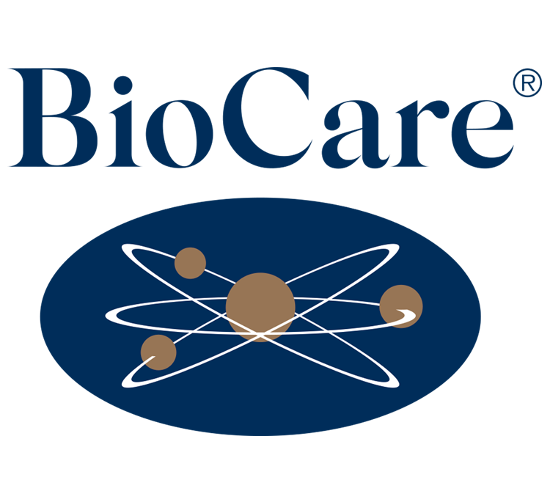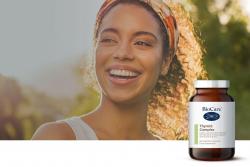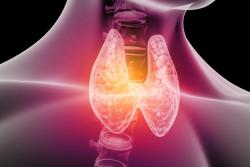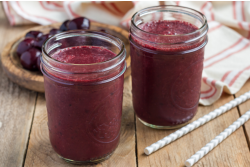For many of us, becoming ill with a viral infection might make us lethargic for a week or two, but we make a swift recovery. However, this is not everyone’s experience. We are seeing more and more individuals, particularly in light of the current pandemic, experiencing a chronic state of fatigue (classified as fatigue lasting more than six weeks) following infection,1 which prolongs their recovery by weeks and even months to years in some cases and goes on to affect every aspect of their daily life.
Post-viral fatigue is a well recognised post-viral symptom as seen with infections such as the Epstein-Barr and severe acute respiratory syndrome (SARS) virus,2 so it’s not surprising we are seeing a surge in cases.3 Common symptoms include: debilitating fatigue, brain fog, muscle aches, and palpitations.4 So what is driving these ongoing symptoms?
“It’s mitochondria, not hypochondria.” Dr. Sarah Myhill
The body requires a huge amount of energy to fight an infection.5 This is due to various processes the body carries out, in particular, inflammation. It does so by releasing molecules called cytokines and interleukins which drive an inflammatory response.6 This process requires a lot of energy, also known as ATP (adenosine tri-phosphate), which is produced by our mitochondria - organelles within our cells which are responsible for making energy. Fighting off an infection puts a high demand on this ATP and in some cases, to a point of depletion which contributes to the development of extreme fatigue.
Alongside this high energy demand, we often experience a change in our appetite, since being bed-bound or feeling unwell often means our diet becomes increasingly restricted, resulting in reduced nutrient intake. Collectively, this can leave us heavily depleted in vital nutrients, notably B vitamins, CoQ10 and magnesium which are otherwise needed for energy production,7,8which can go on to further drive fatigue. Therefore, it is important to ensure that we have an optimum daily intake of vitamins and minerals to make sure we have enough to both fight infection and nourish our energy production processes.
FREE RADICAL DAMAGE
When fighting off an infection, molecules known as reactive oxygen species (ROS) are created by the immune system to create a hostile environment for the pathogen which thus helps to facilitate its eradication.9However, if in excess, this can give rise to an imbalance between ROS and antioxidants (those protective molecules which help to quench free radicals and protect cells), leading to an inflamed, oxidative state within the body which puts our mitochondria under further strain.10 Our bodies rely on an adequate dietary intake of antioxidants, such as vitamin C, E, selenium, and beta carotene, to help efficiently quench ROS and prevent tissue damage. We also have in-built antioxidant systems which provide us with further protection. Our ‘master antioxidant’, glutathione, is particularly important here. When our body is inflamed and producing a lot of free radicals during an infection, there is a high demand on our antioxidant defences, which can become depleted if there isn’t enough ‘supply’ to match this demand. 11, 12
Environmental factors, such as a sedentary lifestyle, emotional and physical stress, and a high toxic-load (e.g. from non-organic, heavily processed/fried foods), can increase inflammation and ROS production further still, and increase the risk of further disruption to mitochondrial function.13 Strikingly, recent research has revealed the prevalence of post-traumatic stress disorder (PTSD) following a viral infection.14 This is an important finding which highlights the role which high emotional stress may play in the development of lingering post-infection symptoms.
Inflammation itself is a source of stress and a drain on our nutrient status, which can result in an even greater strain on our energy levels. This can be exacerbated if we already have a high degree of inflammation within the body, as if often the case with obesity and diabetes, for example.15 Therefore, the level of inflammation within the body prior to an infection can affect how well it can fight off the infection and the speed of recovery.162
Nourishing our mitochondria through nutrition and lifestyle is a vital consideration when trying to ensure a swift recovery from infection. Increasing dietary and supplemental intake of the very nutrients required for ATP production in our mitochondrial is critical, such as vitamin B2, B3, B12, and magnesium. This also includes oxygen, which is a critical nutrient for energy production. Deep, slow, nose breathing is an excellent way of simultaneously increasing blood oxygenation and calming the nervous system,17 both of which may go on to help restore energy levels post-infection.
Given the negative impact of inflammation and oxidative stress of our mitochondria, it is including anti-inflammatory and antioxidant support in your protocol. A great starting point is to enjoy a diverse, colourful, plant-rich diet which provides a plethora of vitamins, minerals, and phytonutrients, with a particular focus on ‘superfoods’ such as turmeric, ginger, green tea, and pomegranate. If your recovery from an infection is particularly slow, it would be worth also supplementing with anti-inflammatory and antioxidant nutrients and botanicals to help you reach a more therapeutic dosage, with a particular focus on omega-3 and turmeric.18
Last but by no means least, it is important to rest to allow your body the time it needs to heal and recover fully.
Got a question?
The brand you can talk to:
We have a team of Nutritionists at the end of our advice line, open to you, for product support and advice (5 days a week). 0121 433 8702 or clinicalnutrition@biocare.co.uk
Or head to our advice page.
Not registered for an account with BioCare®?
You can register now to receive up to date news, product information and exclusive offers whether you are a consumer, practitioner or retailer.
References
1. Williams F. Coronavirus: why are some people experiencing long-term fatigue? Accessed October 20, 2020. https://www.kcl.ac.uk/coronavirus-why-are-some-peo...
2. Islam M et al. Post-viral fatigue and COVID19 lessons from past epidemics. Fatigue. 2020;8(2):61-69. https://doi.org/10.1080/21641846.2020.1778227
3. Williams F. Coronavirus: why are some people experiencing long-term fatigue? Accessed October 20, 2020. https://www.kcl.ac.uk/coronavirus-why-are-some-peo...
4. Russell A et al. Persistent fatigue induced by interferon-alpha: a novel, inflammation-based, proxy model of chronic fatigue syndrome. Psychoneuroendocrinology. 2019:100;276-285. doi: 10.1016/j.psyneuen.2018.11.032
5. Segestrom S. Stress, Energy, and Immunity. Curr Dir Psychol Sci. 2007;16(6)326-330. doi: 10.1111/j.1467-8721.2007.00522.x.
6. Yamato N & Kataoka Y. fatigue sensation following peripheral viral infection is triggered by neuroinflammation: who will answer these questions? Neural Regen Res. 2015;10(2):203-204. doi: 10.4103/1673-5374.152369
7. Depeint F et al.Mitochondrial function and toxicity: Role of the B vitamin family on mitochondrial energy metabolism.Chemico-Biological Interactions 2006; 163(1-2):27.
8. Wesselink E et al. Feeding mitochondria: Potential role of nutritional components to improve critical illness convalescence. Clinical Nutrition. 2018;38(3):982-995.
9. Tavassolifar M et al. the influence of Reactive Oxygen Species in the Immune System and Pathogenesis of Multiple Sclerosis. Autoimmune Dis. 2020;1-14. doi: 10.1155/2020/5793817
10. Pizzino G et al. Oxidative stress: Harms and Benefits for Human Health. Oxid Med Cell Longev. 2017: 1-13. doi: 10.1155/2017/8416763
11. Laufs U et al. Physical Inactivity Increases Oxidative Stress, Endothelial Dysfunction, and Atherosclerosis. Arteriosclerosis, Thrombosis, and Vascular Biology. 2005;25(4);809-814. doi.org/10.1161/01.ATV.0000158311.24443.af
12. Guo C et al. Oxidative stress, mitochondrial damage and neurodegenerative diseases. Neural Regen Res. 2013;8(21):2003-2014. doi: 10.3969/j.issn.1673-5374.2013.21.009
13. Tracey K. The inflammatory reflex. Nature. 2002;420(6917):853-9. doi: 10.1038/nature01321.
14. Kaseda E & Levine A. Post-traumatic stress disorder: A differential diagnostic consideration for COVID-19 survivors. The Clinical Neuropsychologist. 2020;34(7-8):1498-1514. doi.org/10.1080/13854046.2020.1811894
15. Wang H & Ye J. Regulation of Energy Balance by Inflammation: Common Theme in Physiology and Pathology. Rev Endocr Metab Disord. 2015;16(1):47-54. doi: 10.1007/s11154-014-9306-8
16. Sanchez E et al. Viral activation of cellular metabolism. Virology. 2015;479-480:609-618. doi.org/10.1016/j.virol.2015.02.038
17. Leelarungrayub J et al. Preliminary study: comparative effects of lung volume therapy between slow and fast deep-breathing techniques on pulmonary function, respiratory muscle strength, oxidative stress, cytokines, 6-minute walking distance, and quality of life in persons with COPD. Int J Chron Obstruct Pulmon Dis. 2018;5(13):3909-3921. DOI: 10.2147/COPD.S181428
18. Bright. Curcumin and autoimmune disease. Adv Exp Med Biol. 2007; 595: 425-51.





